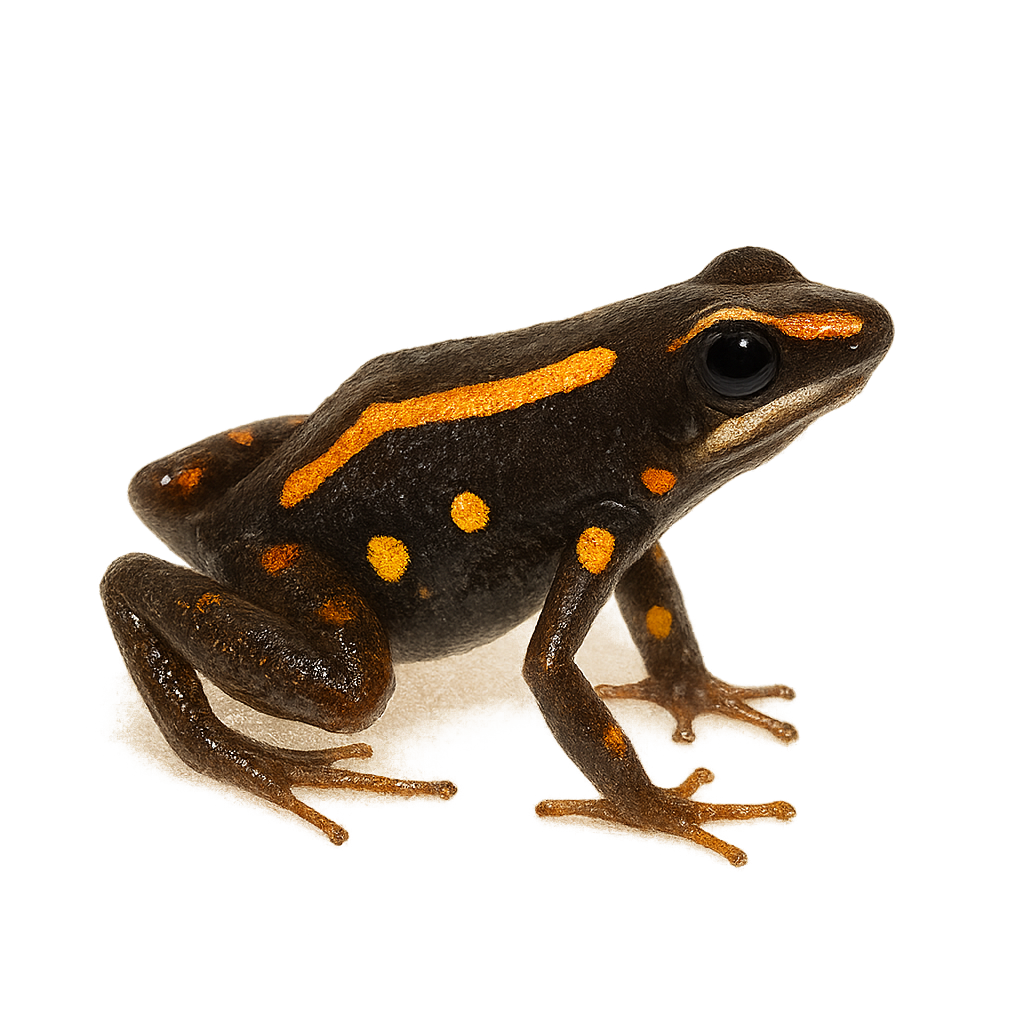Your wildlife photography guide.
Explore the santiago poison frog in detail, study its behavior, prepare your shots.
Where to observe and photograph the santiago poison frog in the wild
Learn where and when to spot the santiago poison frog in the wild, how to identify the species based on distinctive features, and what natural environments it inhabits. The WildlifePhotographer app offers tailored photography tips that reflect the santiago poison frog’s behavior, helping you capture better wildlife images. Explore the full species profile for key information including description, habitat, active periods, and approach techniques.
Santiago poison frog
Scientific name: Excidobates captivus

IUCN Status: Near Threatened
Family: DENDROBATIDAE
Group: Amphibians
Sensitivity to human approach: Suspicious
Minimum approach distance: 2 m
Reproduction period: November to December
Incubation: 10–14 jours
Births: December to January
Habitat:
Humid rainforests, dense undergrowth
Activity period :
Primarily active during the day, with peak activity in the morning and late afternoon.
Identification and description:
Excidobates captivus is a species of poison dart frog endemic to the humid rainforests of Peru. This small amphibian, measuring about 2 to 3 cm, is known for its bright coloration, typically a mix of yellow, black, and sometimes blue, which warns predators of its toxicity. Its skin secretes potent alkaloids, used by local populations to poison arrows. It primarily inhabits dense undergrowth, feeding on small insects and invertebrates. Reproduction usually occurs during the rainy season when conditions are ideal for tadpole development. Although its population is stable, deforestation and collection for the pet trade threaten its natural habitat.
Recommended lens:
Macro – adjust based on distance, desired framing (portrait or habitat), and approach conditions.
Photography tips:
To photograph Excidobates captivus, opt for a discreet and patient approach. Use a macro lens to capture the details of its colorful skin. Natural morning or afternoon light is ideal to highlight its bright colors. Avoid sudden movements to prevent scaring it away. A tripod can be useful to stabilize your camera in the dark undergrowth. Be mindful of the environment to avoid disturbing its fragile habitat.
The WildlifePhotographer App is coming soon!
Be the first to explore the best nature spots, track rutting seasons, log your observations, and observe more wildlife.
Already 1 432 wildlife lovers subscribed worldwide

